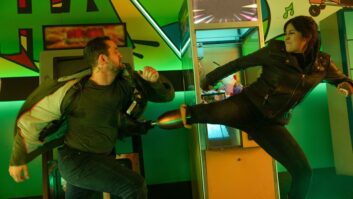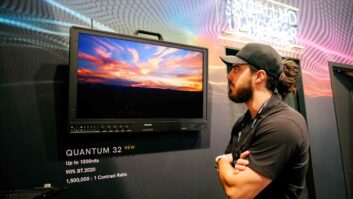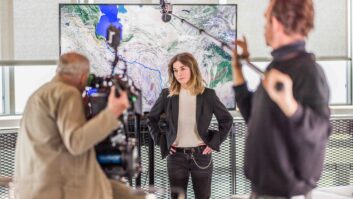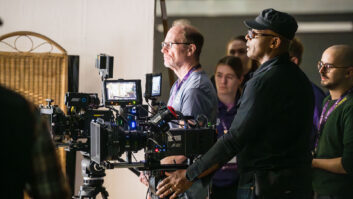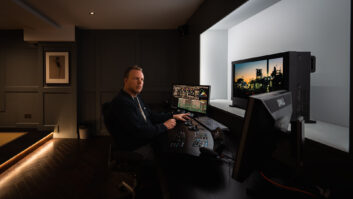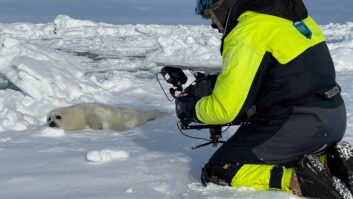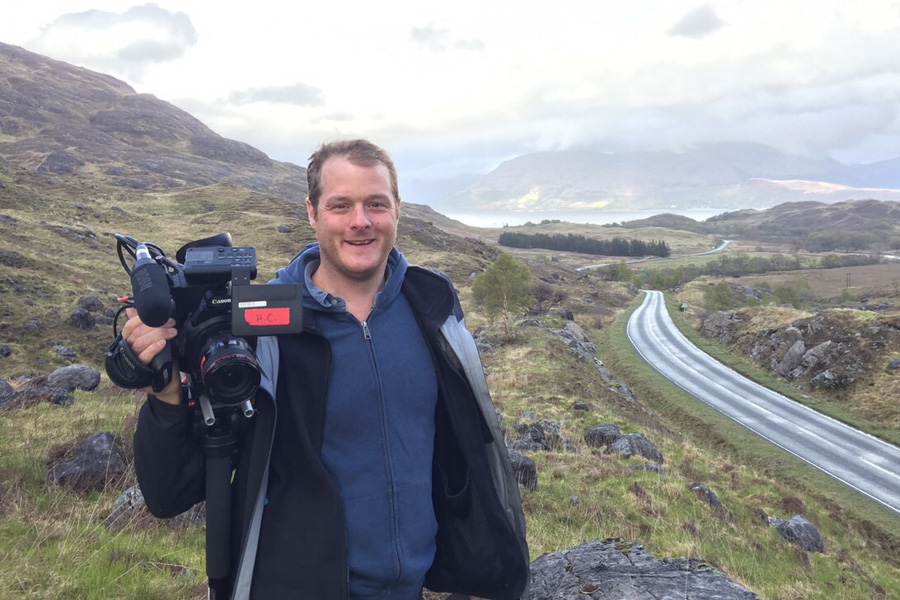
There was a time when having a director or producer actually operate a camera on his or her own production would have been unthinkable. Apart from anything else, unions would have taken a dim view of such practices. But things have changed, and now self-shooting has become a vital part of many directors’, producers’ and researchers’ CVs. So, with that in mind what is the secret of success?
“For me, it would have to be adequate and thorough preparation,” states Mark Reeson, the trainer who runs self-shooting courses at London based Pro-Motion Hire. “You must ensure you have all the right kit, a definite plan for the schedule and a clear understanding of exactly what footage is required from the shoot.”
David Hipkin, a self-shooting producer and director with ten years’ experience agrees. “Ideally, it’s having a good plan so you know what you need and what you want to get. Sometimes you have to improvise and work with the situation as you find it. With that in mind, always have what is almost a set of templates that you know will work for different situations.”
Matt Pelly has been employed as a self-shooting director since 2008. His principle credits include 999 What’s Your Emergency, Kid Criminals and Hunted all for Channel 4 and Route Masters for BBC2.
“I believe the secret of success is to become technically proficient enough so the camera skills become second nature, including exposure, focus, white balance, framing and coverage. That means you can concentrate on often subtler, more complicated skills of contributor management, relationship building and interviewing.” In order to be successful, clearly there are challenges to be met. For Reeson, the biggest is managing expectations of exactly what is actually possible to achieve as a self-shooter.
Hipkin goes further. “When it comes to challenges, I believe the first is maintaining attention to detail across all areas of the role. But beyond that, the greater demand for multi skilled self-shooters, alongside a shift to large sensor cameras and DSLRs using prime lenses or zooms designed for stills systems, rather than an all-in-one camcorder, actually makes some aspects of self shooting more challenging.”
The kit
Talking of cameras, and other equipment generally, what are the most popular choices? “It really depends on the project,” believes Hipkin. “I’ve been using the Canon C100 and C300 on quite a few things recently. That’s because I appreciate that they are designed as video cameras. That means you’ve access to all the things you need right there, with well-placed buttons for zebra, focus assist, and XLR inputs that eliminates the need for separate audio. With good lenses you have a nice 35mm sensor look with a practical camera and for quick turnaround the default colour profiles look nice without too much work.”
The C300 is also a favourite with Pelly. “This is my preference because it was the first affordable large chip ‘filmic’ camera available to self-shooters. It’s also small and unobtrusive so great for sensitive filming and interviews. I would consider the FS7, as ergonomically many prefer it.”
According to Reeson, there is an increasing trend towards both Sony FS7 and the C300 as the self-shooters choice. “However, I still think that the Canon XF305 and Sony PMW200 are well established.” Reeson believes the modular cameras tend to overcomplicate matters. “When you’re juggling many different roles, it’s less of a headache to have a completely self-contained camcorder.”
He continues, “When it comes to choosing a tripod I prefer a heavier model, like a Sachtler 18. I find that the heavier tripods are much more stable, and the level of adjustment is far superior with them when compared to the smaller, lighter versions. However, it really does depend on the nature of the work that you’re involved in shooting.”
Pelly says he is happy to use whatever tripod is available, although he maintains that Sachtlers always work well. “I don’t tend to use a tripod a huge amount except for GVs, but a lightweight model is always useful for observational documentaries.”
Different techniques?
Whatever camera and other equipment is being used, the technology must not get in the way of the self-shooters primary role: directing. With that in mind, apart from the obvious fact that the director is behind the camera, does a self-shooter direct the on-screen talent any differently?
“Not really,” says Hipkin. “It’s important to ensure you give the talent enough of your focus and attention and step out or at least peer around from behind the camera. This is another reason why smaller, lighter set-ups are useful to the self-shooter.”
Reeson concurs. “Good directing is good directing. The thing that changes with self-shooting is the amount of pressure put on the director.” Pelly adds a different perspective. “I find it can be a more intimate relationship without a cameraman. You can also work quicker and more efficiently.”
Standards
But with the increase in the use of self-shooting, does Reeson think the standards have improved? “I still see the same common mistakes crop up regularly. Most noticeably, poor sound, that’s why I would always recommend using a separate sound recordist, and out of focus and over exposed shots. However, it does appear that there’s a levelling of the standard of skills, as more and more experience is gained in the field by the self-shooters that seem to be doing the rounds currently.”
Pelly agrees. “I really believe that the quality of self-shooters is improving; that’s been the trend over recent years.”
Good advice
Based on their experiences and observations of the current state of the technology and the market, what advice should be given to those planning a self-shooting career?
Hipkin says, “Don’t get absorbed in the challenge of self shooting and ignore the other aspects of your role.” Reeson adds, “My advice would be to pace yourself. You’ll be burnt out quickly if you simply hop from one project to another, without allowing yourself time to rest and recharge. The other thing I’d say is to build your skill from a solid foundation: avoid bluffing your way through obvious gaps in your skills, and concentrate on getting experience and knowledge that will address those inadequacies.”
Pelly believes there is nothing like experience. “Get proficient technically by practicing on short films and just getting time behind the camera in pressurised situations. It’s one thing doing a sit-down interview, and quite another thinking about changing lenses whilst chasing a policeman.”
He adds, “the best advice I ever got was to become a good self-shooter. It’s not rocket science, but many people are scared off by the technical aspects. Bite the bullet and learn it. It will always hold you in good stead, even when directing other cameramen, as they really appreciate that you understand light and lenses. So, do it! It’s a highly prized skill in a world where mixing the technical with the personal is highly valued.”
